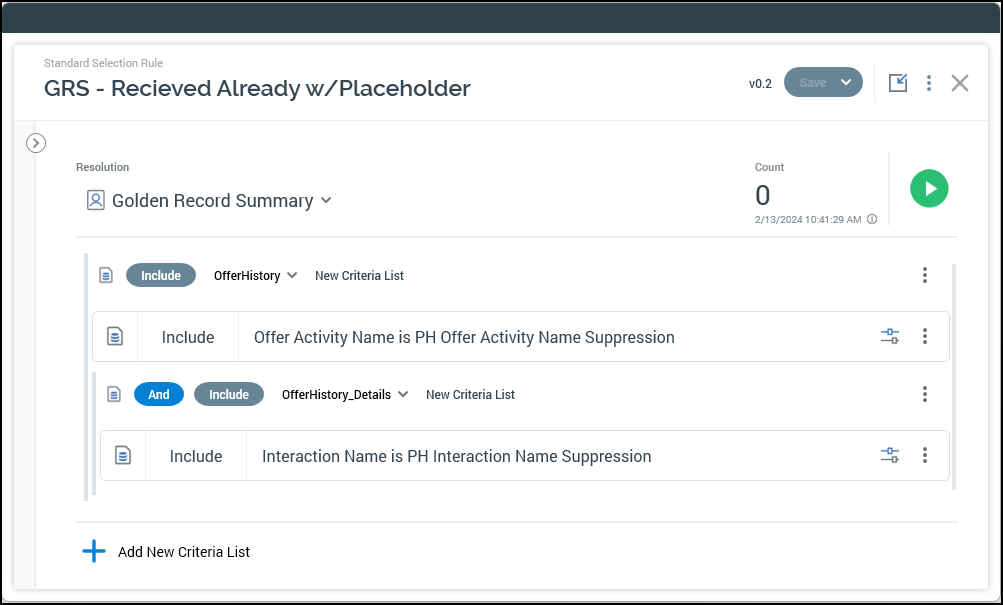RPI configured suppressions
Overview
This document provides background of the campaign suppressions that have been configured within RPI. As more suppressions get created, they will get added here, along with information about them.
What are suppression rules?
Suppressions are a set of selection rules within RPI that are used to select records that a user wants to remove from a given campaign audience. Suppression rules should be used within the suppression blocks in the interaction as designed. Although suppression rules can also be used within the filter blocks, this is not recommended.
In the core data model, there is a table that contains a set of pre-defined rules to use within RPI: dbo.Individual_Suppression_Summary. While this table is specific to the pre-defined core data model suppressions, RPI users can create custom suppression rules using any table or attribute that is exposed in RPI.
All of these rules are saved within RPI/Selection Rules/Suppressions folder in RPI.
Configured rules for suppressions
Deceased records
This selection rule is configured to select all the records that have a deceased_ind = Y within the dbo.Individual_Suppression_Summary table.
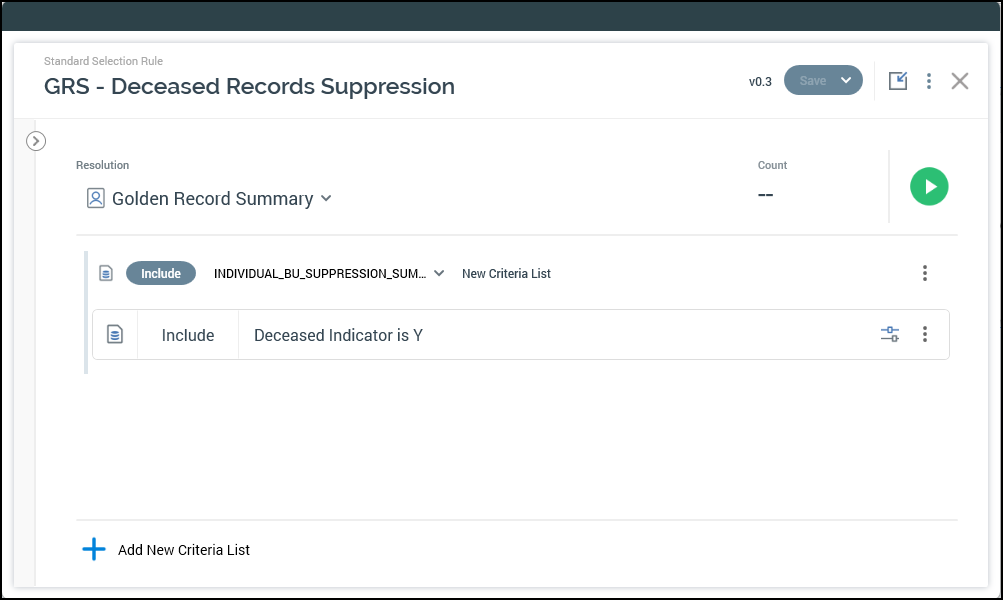
Fraud records
This selection rule is configured to select all the records that have a fraud_ind = Y within the dbo.Individual_Suppression_Summary table.
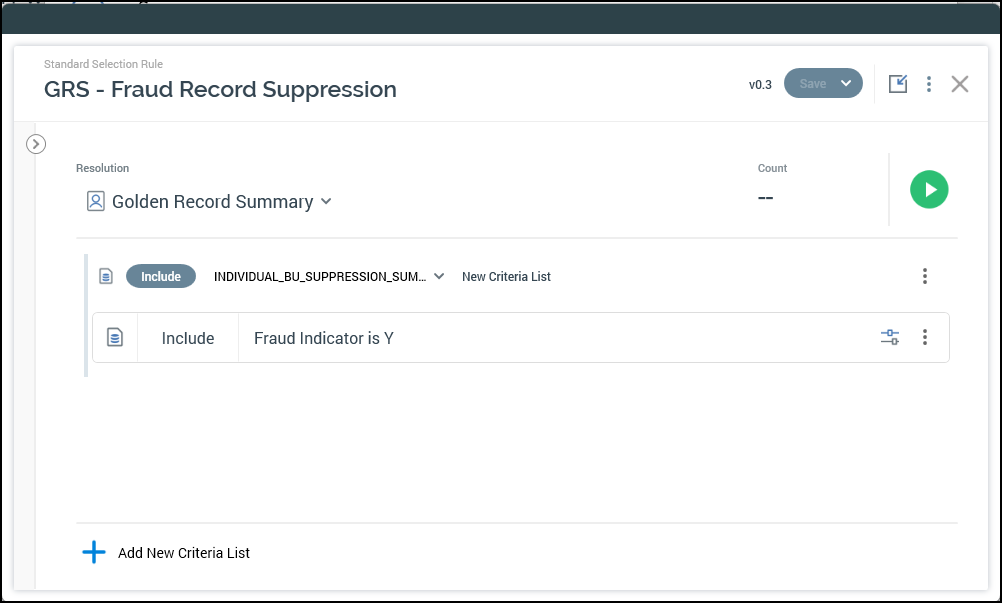
Employee records
This selection rule is configured to select all employee records based on the employee_ind field from the Individual_Golden_Record table.
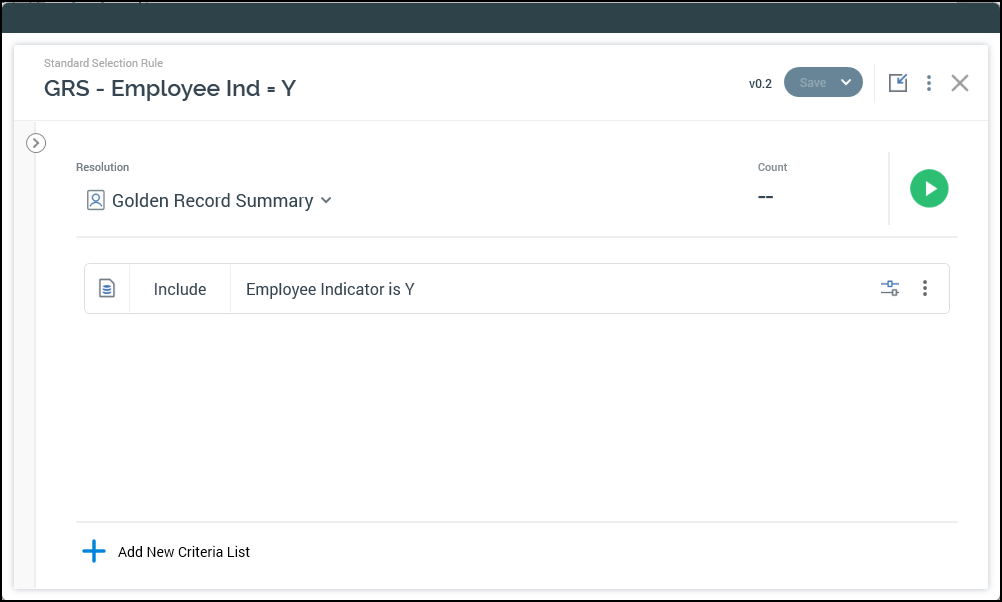
Vulgar email record
This selection rule is configured to select all the records that have a vulgar_email_ind = Y within the dbo.Individual_Suppression_Summary table.
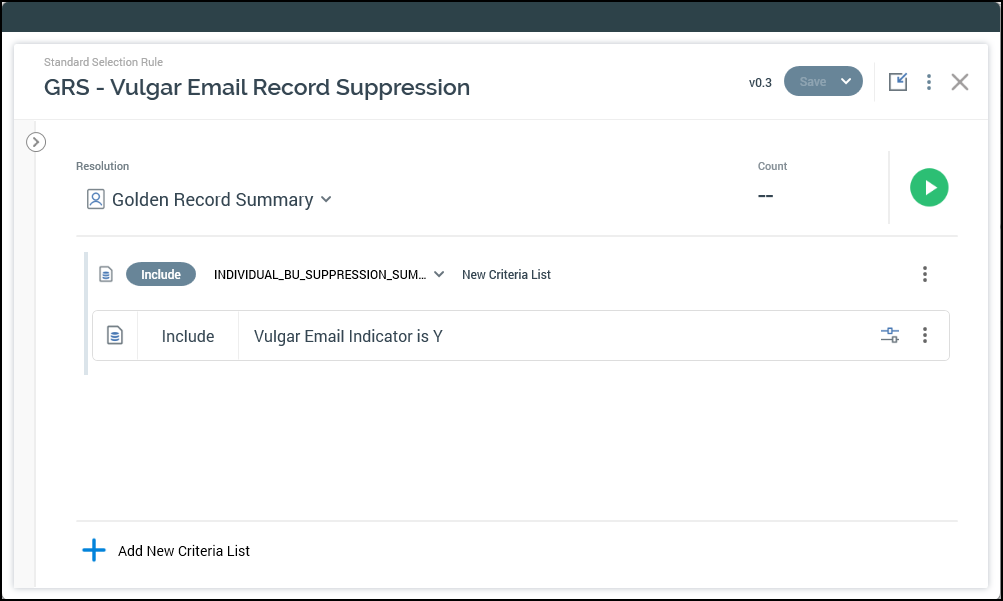
Vulgar name record
This selection rule is configured to select all the records that have a vulgar_name_ind = Y within the dbo.Individual_Suppression_Summary table.
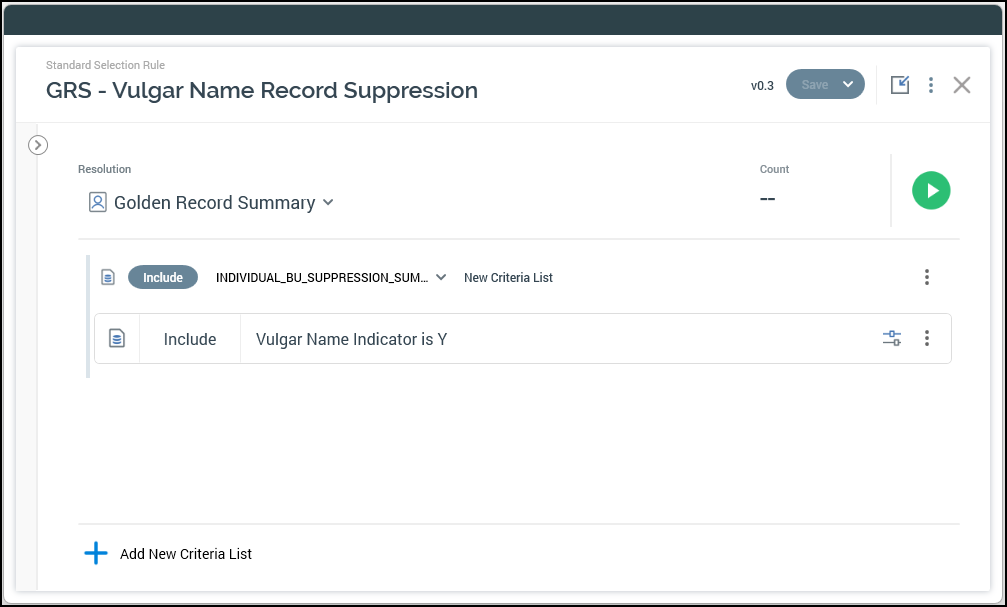
Vulgar address record
This selection rule is configured to select all the records that have a vulgar_address_ind = Y within the dbo.Individual_Suppression_Summary table.
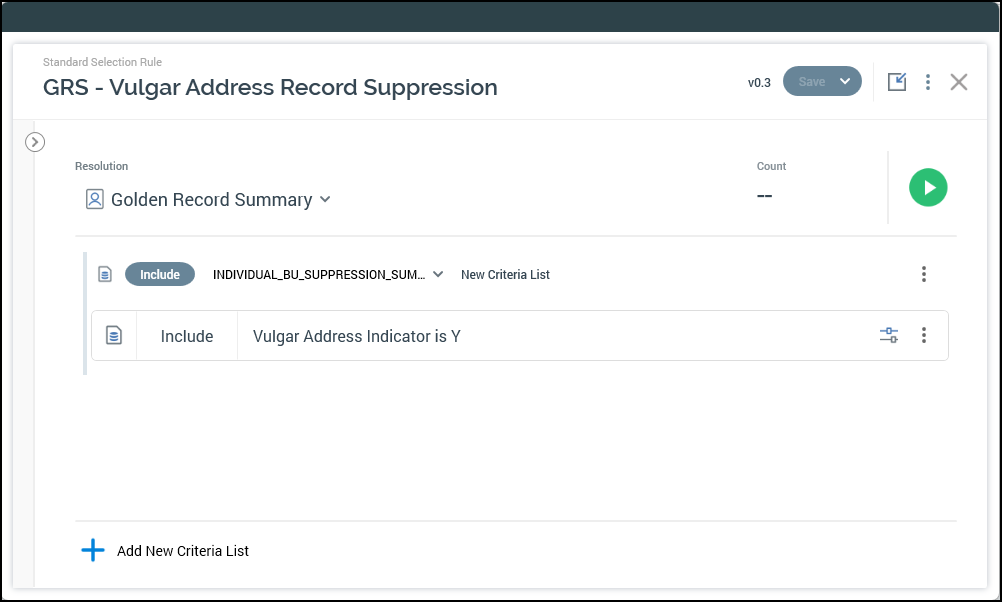
Received already with placeholders
This selection rule is configured to allow you to select records that have been targeted in a previous campaign. This rule uses offer history as its base table along with two placeholders that look at offer activity name and also interaction name.
Offer activity name is the name of the last process block that ran in the previous campaign, which is usually an offer, data extract, or control process blocks. Interaction name is the name of the previous interaction that these records were selected in.
For more information on placeholders, see Placeholder attribute information.
